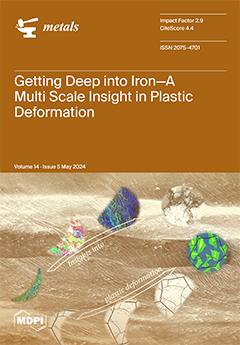Molybdenum diselenide (MoSe
2) is a promising anode for alkali-ion storage due to its intrinsic advantages. However, MoSe
2 still encounters the issues of structural instability and poor rate performance caused by drastic volume change and sluggish reaction kinetics. Reasonable design of
[...] Read more.
Molybdenum diselenide (MoSe
2) is a promising anode for alkali-ion storage due to its intrinsic advantages. However, MoSe
2 still encounters the issues of structural instability and poor rate performance caused by drastic volume change and sluggish reaction kinetics. Reasonable design of electrode structure is crucial for achieving superior electrochemical performance. Herein, a novel hierarchical structure coupled with 1D/1D subunits is elaborately designed and constructed, in which the MoSe
2/CoSe
2 heterostructure is the “trunk” and the N-doped carbon nanotubes are the “branches” (MoSe
2/CoSe
2/NCNTs). Benefiting from the properties endowed by unique configurations, MoSe
2/CoSe
2/NCNTs electrodes manifest faster reaction kinetics and better structure durability. Evaluated as an anode for LIBs and SIBs, MoSe
2/CoSe
2/NCNTs deliver high reversible capacity, superior rate capability (452 at 10 A g
−1 in LIBs and 296 at 10 A g
−1 in SIBs), and prominent cycle life (553 after 2000 cycles at 5 A g
−1 in LIBs and 310 after 2000 cycles at 5 A g
−1 in SIBs). Such design conception can also provide guidance for the development of other high-performance electrodes.
Full article





